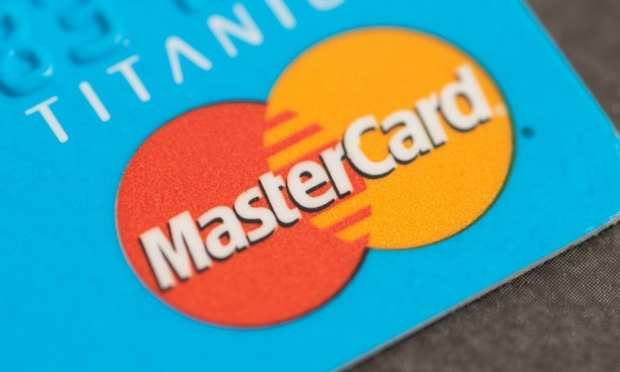Mastercard: Transactis Buy Speeds Bill Pay’s Digitization

Forty-four percent of the 15 billion bills in the U.S. are paid with cash or check — archaic methods in a mobile world. Mastercard is buying Transactis as it readies its Bill Pay Exchange for a 2019 launch. Mastercard’s Transactis deal is one that deepens and broadens the payment giant’s online bill payments, as Mastercard’s EVP of New Payments Colleen Taylor explains.
Inefficient, but stubbornly entrenched, paper and cash dominate bill payments. With 44 percent of the 15 billion bills in the U.S. paid using those archaic payment choices, the move to digital payments is a shared effort amid companies, processors, billers and, of course, consumers.
Mastercard said on Friday (May 3) that is acquiring Transactis, a bill payment platform, in an effort to streamline bill presentment and payments. Financial terms of the transaction were not disclosed.
The payments giant noted in a press release on Friday that Transactis’ payments technology — distributed through a network of bank and non-bank partners — can be used with both large enterprises and smaller companies (the latter operating across the educational and property verticals) to support online bill pay. As Colleen Taylor, Mastercard’s executive vice president of new payments, said in an interview with PYMNTS’ Karen Webster, the acquisition broadens the firm’s efforts to bring digitization to bill payments.
Transactis, she said, will allow Mastercard to address bill payment needs in online bank applications and across biller websites, with enhanced payment options and user interfaces — eyeing real-time transactions marked by a richer level of detail.
The Transactis deal, slated to close in the second quarter, comes as Mastercard is readying the Mastercard Bill Pay Exchange for a full launch later in the year. Mastercard Bill Pay Exchange, announced in October 2018, is a platform that lets consumers manage and pay bills — spanning utilities, rent, credit cards and other financial obligations — through digital banking applications.
Banks and credit unions can access the platform through application program interfaces (APIs). In terms of functionality and bill management activities, Mastercard Bill Pay Exchange allows consumers to see when bills are due, view details about the services provided and the payments required, and make payments with choices in the mobile apps that include, but are not limited to, card or ACH rails.
Broadening the payment options from paper checks, cash or ACH conduits, noted Webster and Taylor, helps companies seeking speedier payments from their end users to travel down the “long tail” toward a significant decline in check usage.
From Partnership To Acquisition
The acquisition comes after Mastercard had already been in partnership with Transactis, said Taylor, but a number of factors drove Mastercard to bring the company fully into the fold. As she related, Transactis has several “feature functions that will enhance Mastercard Bill Pay Exchange, such as offering a small business onboarding tool that is essentially self-service,” so that firms can quickly offer online bill payment to end customers.
Transactis, she continued, also has in-house experience, expertise and depth with APIs, and in integrating with banks and non-banks for bill payments. She added that Transactis has already contracted with treasury management organizations, and effectively acts as a distributor for financial and payment services.
Reducing the time — and costs — in getting set up for online bill payments is especially important for smaller companies, said Taylor, as “it is expensive for the entire ecosystem, and it is particularly expensive for small billers.”
The Technical Discussion
Taylor related that Mastercard Bill Pay Exchange, as offered through banks and credit unions, will link to The Clearing House’s (TCH’s) real-time payments infrastructure, tied to technology and infrastructures on offer from Mastercard’s Vocalink.
Consumers will be able to pay bills instantly and directly from their bank accounts, and payments will settle in seconds, rather than days. In addition, through the ISO 20022 messaging standard, there will be a “richer data set” accompanying transactions so that Mastercard “can bring an interactive experience to the customer” that, among other things, spans confirmation of payments in real time.
“We’re trying to reinvent the payment, but we know that consumer behaviors will need to change,” explained Taylor. “If we get the right technology and tools in place for consumers through the billers and the banks (and it’s a complex environment), we think we’re perfectly suited in the middle,” she said of Bill Pay Exchange, now enhanced with Transactis.
Strategy And Roadmap
In terms of broader strategy, as “we make bigger plans to play in the wholesale payment space, it is great to have those relationships in place” through Transactis, said the executive. “There are lots of synergies in those relationships, and we think Transactis is going to help us build a new network that will lead to better consumer experiences across the board.”
Shedding more light on the third quarter Mastercard Bill Pay Exchange roadmap, Taylor explained that the firm will initially debut the platform through what is known as the “friends and family program,” tied to the company’s closest partners. Then, it will go for a commercial launch, with an eye on continuously adding more partnerships, working with large and small billers, and reaching out to processors that have bill payment solutions.
“We acquired Transactis, but we know that this whole idea of creating a new network means that we have to have a lot of network players,” Taylor told Webster. Despite the competing technologies, priorities and motivations, though, she said that in shared quest to make bill payments a better experience for consumers, “we think the best way to get there is to get many different stakeholders to play the game with us.”
